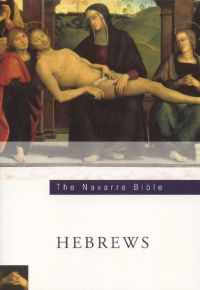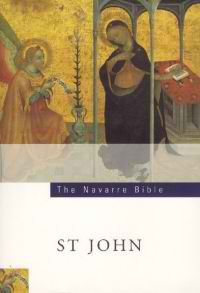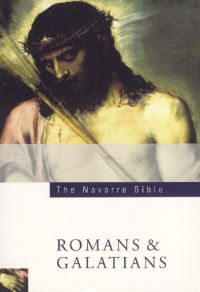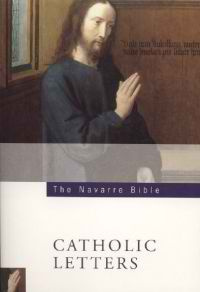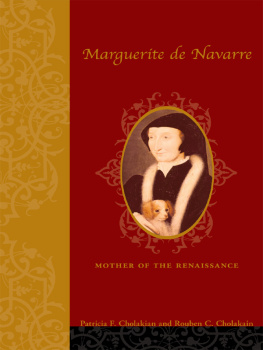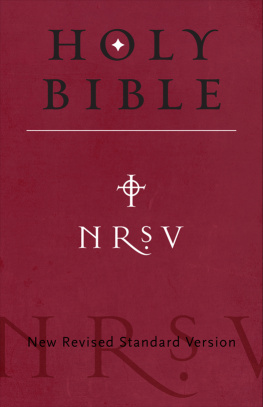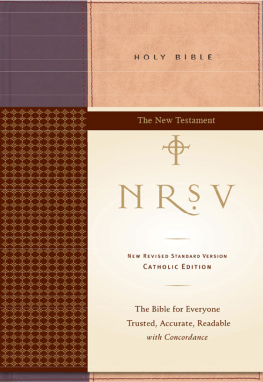University of Navarra - The Navarre Bible: Acts of the Apostles
Here you can read online University of Navarra - The Navarre Bible: Acts of the Apostles full text of the book (entire story) in english for free. Download pdf and epub, get meaning, cover and reviews about this ebook. year: 2005, publisher: Four Courts Press, genre: Religion. Description of the work, (preface) as well as reviews are available. Best literature library LitArk.com created for fans of good reading and offers a wide selection of genres:
Romance novel
Science fiction
Adventure
Detective
Science
History
Home and family
Prose
Art
Politics
Computer
Non-fiction
Religion
Business
Children
Humor
Choose a favorite category and find really read worthwhile books. Enjoy immersion in the world of imagination, feel the emotions of the characters or learn something new for yourself, make an fascinating discovery.
- Book:The Navarre Bible: Acts of the Apostles
- Author:
- Publisher:Four Courts Press
- Genre:
- Year:2005
- Rating:4 / 5
- Favourites:Add to favourites
- Your mark:
- 80
- 1
- 2
- 3
- 4
- 5
The Navarre Bible: Acts of the Apostles: summary, description and annotation
We offer to read an annotation, description, summary or preface (depends on what the author of the book "The Navarre Bible: Acts of the Apostles" wrote himself). If you haven't found the necessary information about the book — write in the comments, we will try to find it.
University of Navarra: author's other books
Who wrote The Navarre Bible: Acts of the Apostles? Find out the surname, the name of the author of the book and a list of all author's works by series.
The Navarre Bible: Acts of the Apostles — read online for free the complete book (whole text) full work
Below is the text of the book, divided by pages. System saving the place of the last page read, allows you to conveniently read the book "The Navarre Bible: Acts of the Apostles" online for free, without having to search again every time where you left off. Put a bookmark, and you can go to the page where you finished reading at any time.
Font size:
Interval:
Bookmark:
The Navarre Bible
The Acts of the Apostles
[]
THEINSPIRED TEXT OF THE BIBLE AND THE MANUSCRIPT SOURCES
The sacred booksinspired by God which contain supernatural revelation are listed in the canonof Scripture fixed by the Church. These books were written in Hebrew, Aramaicand Greek, the languages of their various human authors. The text of the Biblewhich has come down to us is substantially the same as that written by theseinspired writers (prophets, evangelists etc.), as can be demonstrated by thenormal procedures used by scholars.
Biblicalscholarship has also contributed and is still contributing to improving thattext, that is to say, eradicating errors and defective corrections which foundtheir way into the text in the course of time due to manuscripts having to beconstantly copied and recopied by hand prior to the invention of printing.
All the books ofthe New Testament were written in Greek, which was the lingua franca of theMediterranean countries from the time of Alexander the Great onwards (fourth tothird centuries B.C.). The only non-Greek original an Aramaic or Hebrew textof St Matthews Gospel has not survived. The original manuscripts of the NewTestament were lost quite early on, the reason being that the papyrus on whichthey were written normally had a life-span of not more than 200 years. We knowthat as early as the middle of the second century none of these manuscripts wasstill extant. They were not used, for example, in the controversy against theheretic Marcion: this controversy hinged on which texts were authentic andwhich not, indicating that the original text had already disappeared. Theoriginal text was conserved in the form of copies, and very early on more andmore copies came to be made. In addition to papyrus, leather was also used as awriting material, but a real breakthrough came with the development ofparchment or vellum. In the second century parchment began to be made or atleast sold commercially in the city of Pergamon ,from which it took its name. Initially texts were copied on to rolls ofparchment later they began to be produced in book form, as codexes this bookform meant that the text was easier to access and it also had the advantage ofsaving parchment. Parchments dating from the fourth century are still inexistence.
The oldestpapyrus New Testament text still extant contains some verses of St Johns Gospel(18:31-33, 37-38) and has been dated c. 125 A.D.
The documentarysources of the New Testament fall into three groups:
a) Greek copies. According to a 1976 surveythere are over 5,000 texts extant:
88 papyrusfragments;
274 manuscriptswritten in capitals (that is, each letter is separate and there are noaccents);
2795 manuscriptswritten in lower case letters (that is, the letters in each word are linked);and
2209lectionaries for public liturgical use.
New copies arecontinually being discovered. The catalogue published by K. Aland in 1963listed 4869, whereas the 1976 count was 5366. This means that no other documentof antiquity compares with the New Testament as far as historico-criticalverification of the text is concerned. In no other instance does the number ofextant manuscripts exceed the thousand mark.
b) Early translations. These comprise some 4,000documents containing partial or complete translations of the New Testament.They were made for liturgical, catechetical, theological and other purposes,keeping pace with the spread of the Gospel among new peoples. The mostimportant translations are those made into Latin (from the second centuryonwards, described generically as the Vetus Latina version; these weretranslations made prior to St Jeromes Vulgate); Syriac (second to thirdcenturies, the most important Syriac version being that called thePeshitta,which is fifth century); Coptic (third century); Armenian (fourthcentury), Ethiopian, Slav, Gothic (fourth century) and Arabic.
In ancient timestranslations were made in a very literal way almost word for word; for thisvery reason these early translations have special importance as far asestablishing the history of the text is concerned: they maintain the shape,as it were, as well as the content of the originals from which they were made;originals were located in regions which each had its own distinct culture andtherefore a translation made in one region can often be used as a check on thecompleteness of a version made in another; the range of translations can alsohelp in the choice of a better reading in cases of doubt.
c) Quotations from the New Testament in theworks of ecclesiastical writers. These quotations are, as it were, indirectwitnesses to the correct text and are of very considerable value where theycorroborate the direct witness of the Greek manuscripts. On the basis of thesequotations, which are scattered over a wide range of theological texts andbiblical commentaries, it is possible to reconstruct virtually the entire NewTestament text, Greek and Latin. The text used by these authors is usuallyolder than that in most of the manuscripts that have come down to us, therebyallowing us to check which biblical text was in use in any particular period orregion. In the case of fragments quoted in sermons, it has to be rememberedthat the writers were usually quoting from memory. In all other cases thequotations usually follow an available text word for word. The Fathers of theChurch who most extensively cite the New Testament in Greek or Latin areOrigen, St John Chrysostom, St Cyril, St Jerome ,St Cyprian, St Hilary and St Augustine .
PAPYRI AND CODEXES
Almost onehundred New Testament papyri have so far come to light; all of them areEgyptian, preserved by the extremely dry climate of that country. They began tobe discovered in the nineteenth century and due to their antiquity they areof tremendous value for establishing the authentic text. The most remarkable ofthese papyri are:
a) Three papyri in the Chester Beatty collection (housed in Dublin )known as p45 p46 and p47. These are portions of second-century documentswhich originally contained the Gospels, the epistles of St Paul and Revelation, respectively. Thefirst shows that very early on the four Gospels had already been broughttogether into one single collection. The second papyrus is one hundred and fiftyyears older than any other source of the Pauline text.
b) The Roberts or Rylands Papyrus (p52).Dating from c. 125, and containing some verses of chapter 18 of St JohnsGospel, this was decisive in disproving rationalist theses arguing for a laterdate for this Gospel.
c) The Bodmer Papyrus II (p66). Thiscontains most of St Johns Gospel (1:1-14:26) and was written around the year 200.
The extantpapyri fill the gap in sources between the original text and later manuscripts.They constitute, therefore, a quite unique source of documentation forestablishing the career of the New Testament text. Thus, historico-literaryscholarship combines with faith to show that we do possess the originalrevealed text of the New Testament in a form which is unanimously accepted tobe much more than merely substantial.
The mostimportant Greek codexes of the New Testament are:
a) The Codex Vaticanus (B, or 03). This isthe most valuable of all because of its antiquity. It is a copy made in Egyptin the fourth century, containing all the Old Testament (in the Septuagintversion) and all the New Testament except for some chapters of Hebrews; theEpistles to Timothy, Titus and Philemon; and Revelation. It is housed in theVatican Library.
b) The Codex Sinaiticus (S, or 01). Writtenin the fourth century from an Egyptian MS. this contains the Old and NewTestaments, except for some pages. It was discovered in 1844 in the monasteryof St Catherine on Mount Sinai . It is housedin the British Library.
c)
Next pageFont size:
Interval:
Bookmark:
Similar books «The Navarre Bible: Acts of the Apostles»
Look at similar books to The Navarre Bible: Acts of the Apostles. We have selected literature similar in name and meaning in the hope of providing readers with more options to find new, interesting, not yet read works.
Discussion, reviews of the book The Navarre Bible: Acts of the Apostles and just readers' own opinions. Leave your comments, write what you think about the work, its meaning or the main characters. Specify what exactly you liked and what you didn't like, and why you think so.


